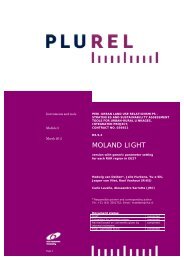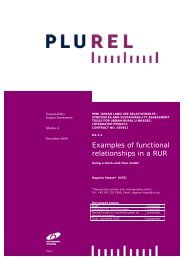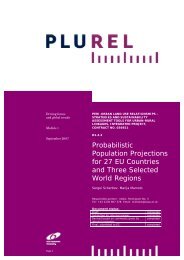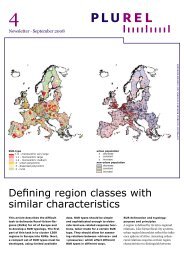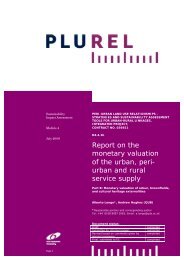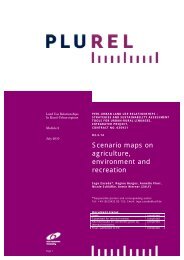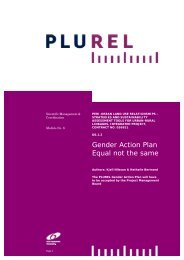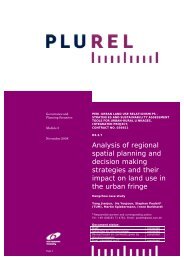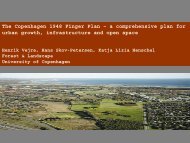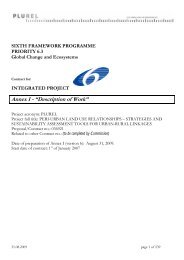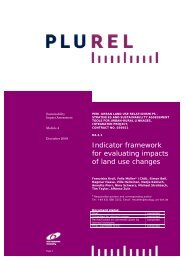Cost benefit analysis of peri-urban land use policy - Plurel
Cost benefit analysis of peri-urban land use policy - Plurel
Cost benefit analysis of peri-urban land use policy - Plurel
Create successful ePaper yourself
Turn your PDF publications into a flip-book with our unique Google optimized e-Paper software.
Open space<br />
Open space in Leipzig was identified using the Mo<strong>land</strong> model, as shown in Figure 3<br />
below. It was estimated that 501 ho<strong>use</strong>s were in the 457.2 metre radius <strong>of</strong> the open<br />
spaces 21 . This is likely an overestimate for the areas in consideration. From the maps, 7<br />
distinct open space areas could be identified – as shown in Figure 3 22 . Changes in the<br />
areas <strong>of</strong> these regions under the scenarios were estimated based on a manual count <strong>of</strong> the<br />
squares impacted. An example for the change for BAU 2024 is shown below as Table 7<br />
(further tables are contained in an annex to this report).<br />
Figure 3: Change in Open Space in Leipzig – BAU – 2001 to 2024 case<br />
2<br />
1<br />
3<br />
6<br />
5<br />
4<br />
7<br />
Source: Mo<strong>land</strong> model outputs<br />
21 Based on estimates from Leipzig <strong>of</strong> 1,677 inhabitants per square km, and average<br />
German ho<strong>use</strong>hold size <strong>of</strong> 2.2.(Source: UNECE, 2001, p74)<br />
22 This demarcation is based on the distances shown in the distance decay effects for open space<br />
valuation.<br />
100



